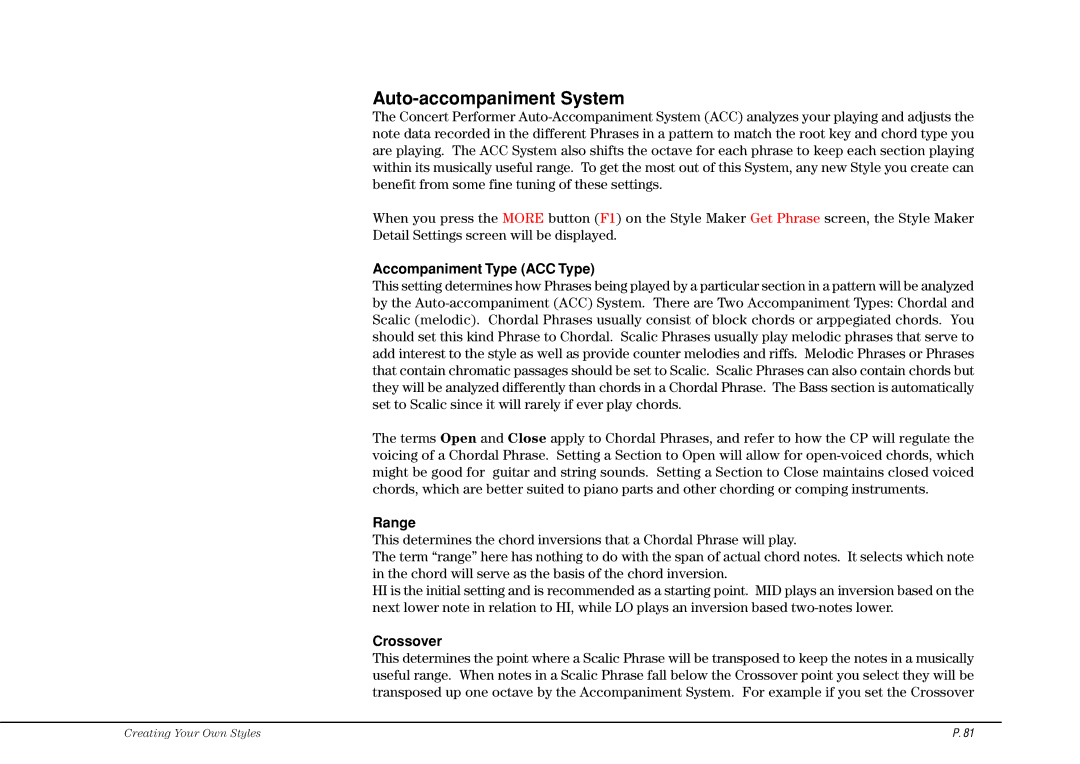Auto-accompaniment System
The Concert Performer
When you press the MORE button (F1) on the Style Maker Get Phrase screen, the Style Maker Detail Settings screen will be displayed.
Accompaniment Type (ACC Type)
This setting determines how Phrases being played by a particular section in a pattern will be analyzed by the
The terms Open and Close apply to Chordal Phrases, and refer to how the CP will regulate the voicing of a Chordal Phrase. Setting a Section to Open will allow for
Range
This determines the chord inversions that a Chordal Phrase will play.
The term “range” here has nothing to do with the span of actual chord notes. It selects which note in the chord will serve as the basis of the chord inversion.
HI is the initial setting and is recommended as a starting point. MID plays an inversion based on the next lower note in relation to HI, while LO plays an inversion based
Crossover
This determines the point where a Scalic Phrase will be transposed to keep the notes in a musically useful range. When notes in a Scalic Phrase fall below the Crossover point you select they will be transposed up one octave by the Accompaniment System. For example if you set the Crossover
Creating Your Own Styles | P. 81 |
